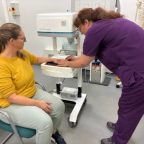
Treating Planar Fasciitis
Individuals with heel pain may receive a diagnosis of plantar fasciitis. This common condition arises when the thick band of tissue running along the bottom of the foot becomes inflamed. The tissue connects the toes or plantar fascia to the heel bone, and the inflammation of this tissue leads to stabbing pain. Men and women often experience this pain when they first stand up and move around in the morning. Once they do so, the pain decreases. However, it often returns after they stand for extended periods of time or when they rise after being seated. Surprisingly, people often report the pain appears after they exercise, rather than when they are in the midst of a workout. Fortunately, treatments and products are available, such as plantar fasciitis insoles from Protalus, preventing the pain from persisting.
Who is Prone to Plantar Fasciitis?
Certain individuals remain prone to developing plantar fasciitis. This includes runners and individuals who wear shoes that lack proper support. In addition, overweight men and women develop this condition more than those of a healthy weight. Keep this in mind when treating plantar fasciitis and take steps to avoid its return.
What Causes Plantar Fasciitis?
Imagine a bowstring. The thick band of tissue running along the base of the foot mimics this shape. It functions to support the arch of the foot while absorbing shock with each step a person takes. When stress and tension on the bowstring increase significantly, small tears appear. With repeated tearing and stretching of the fascia, irritation and inflammation occur. However, medical professionals have yet to determine a definitive cause for this condition. They can only make recommendations on lifestyle changes and how to treat the problem. Fortunately, treating this condition is easier than many belief.
What are the Risk Factors?
While there is no apparent cause for plantar fasciitis, certain people seem to develop this condition more than others. What are the identified risk factors? A person's age plays a role in their likelihood of developing plantar fasciitis, as those between the ages of 40 and 60 receive this diagnosis more than individuals that fall into other age groups. Anyone with a high arch, a flat foot, or any abnormal walking pattern appears to be more at risk of developing this condition, which doctors believe results from uneven weight distribution while standing. The weight distribution puts added stress on this tissue leading to the accompanying pain.
Obese individuals put more stress on the plantar fascia which increases their risk of this condition. Certain activities, those that stress the heel and its attached tissue, contribute to the development of this problem, including long-distance running and some types of dance. Finally, people who spend long hours on their feet on hard surfaces, like teachers and bartenders, harm the plantar fascia when doing so.
Diagnosing this Condition
Doctors diagnose plantar fasciitis with nothing more than the patient's medical history and a physical exam. During this exam, the doctor looks for areas of tenderness, as the location of the pain helps to identify the cause. In most cases, it requires no imaging tests. If the doctor suspects the pain may be attributed to another cause, such as a stress fracture, they order imaging tests to rule that out.
Treating Plantar Fasciitis
Most people find conservative treatment resolves the pain they are experiencing, although eliminating the problem completely takes several months. Over-the-counter pain relievers help keep the pain manageable while reducing the inflammation. Resting the foot and icing the tender area helps to keep pain and inflammation under control. Doctors also recommend patients do stretching and strengthening exercises.
Physical therapists show patients how to stretch the plantar fascia and Achilles tendon to treat the existing problem and prevent a recurrence. In addition, the therapist works with patients to strengthen the muscles of the lower leg and might show this individual how to use athletic taping to provide support for the bottom of the foot. Patients may need orthotics to help distribute the weight so all parts of the foot undergo even pressure, and night splints stretch the calf and foot arch while you sleep. The splint stretches the Achilles tendon and plantar fascia overnight.
Additional treatments typically aren't needed. However, if conservative treatments don't produce the desired results, the doctor may recommend steroid injections to provide pain relief. Platelet-rich plasma drawn from the patient's blood is injected into the tender area to promote healing. Medical professionals limit the use of injections due to a risk of rupture with repeated treatments. Ultrasonic tissue repair involves the use of a needlelike probe inserted into the damaged tissue. Ultrasound energy is then used to break up the damaged tissue before suctioning it out. Doctors rarely recommend surgery, which is reserved for only the worst cases that don't respond to all other treatments.
Why Treat Plantar Fasciitis?
People may assume the pain will go away or alter their gait to favor the heel. Doing so puts them at risk of additional damage. Heel pain often becomes chronic in this situation, and hip, back, knee, or foot problems arise because of the altered gait. For this reason, individuals who suspect they have this condition should see a doctor as soon as possible to obtain a diagnosis and develop a treatment plan.
Lifestyle Changes
Certain changes to your lifestyle can help to prevent a recurrence of plantar fasciitis. Stay at a healthy weight to put less stress on your feet. Wear supportive shoes, avoid going barefoot, and throw worn-out athletic shoes away. Apply ice to keep pain and inflammation to a minimum, and take the time to stretch your arches, the Achilles tendon and the calf muscles. Consider changing your sport to a low-impact one also, as high impact sports may increase the risk of reinjuring the plantar fascia.
Any foot pain needs investigation immediately. Often, the cause is easy to diagnose and treat with conservative measures. However, a person cannot know this without seeing a doctor, so don't delay. When you get this treated quickly, your recovery usually takes less time. This allows you to get back to your regular life and enjoy it without pain.

















